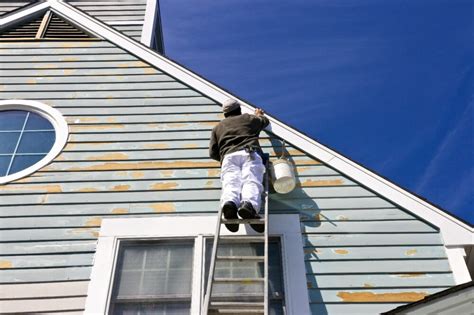The Best Time to Replace Your Home's Siding: A Comprehensive Guide
Your home's siding is its first line of defense against the elements. It protects your home from rain, wind, snow, and sun damage, significantly impacting your home's curb appeal and value. Knowing when to replace it is crucial for maintaining your property's integrity and longevity. This guide will explore the optimal time for siding replacement, considering factors beyond just aesthetics.
How Do I Know When It's Time to Replace My Siding?
Before diving into the when, let's address the why. Several indicators signal it's time for a siding upgrade:
- Visible Damage: Cracks, warping, rotting, significant discoloration, or holes are clear signs of deterioration. These vulnerabilities compromise your home's insulation and increase the risk of water damage, leading to costly repairs down the line.
- Moisture Problems: Persistent dampness or mold growth around the siding indicates water penetration. This can lead to structural issues, rot, and even health problems.
- Energy Inefficiency: Older siding often lacks the insulation properties of modern materials. If you're noticing higher energy bills, inefficient siding might be a contributing factor.
- Curb Appeal Concerns: If your siding is severely faded, stained, or simply outdated, replacing it can significantly boost your home's value and aesthetic appeal.
- Pest Infestations: Siding can harbor pests, such as termites or carpenter ants. If you suspect an infestation, addressing the problem often necessitates siding replacement.
What is the Best Time of Year to Replace Siding?
The ideal time to replace your home's siding is during the spring or fall. Here's why:
-
Spring: Spring offers generally mild weather, allowing for efficient work without the extremes of summer heat or winter cold. The ground is usually dry, making access easier for equipment. Plus, you'll have ample daylight hours for the project.
-
Fall: Similar to spring, fall provides comfortable working temperatures and ample daylight. Before the first major winter storms hit, having new siding installed ensures your home is protected from the harshest elements.
Why Avoid Summer and Winter for Siding Replacement?
While technically possible, summer and winter present challenges for siding installation:
-
Summer: Extreme heat can lead to material warping, quicker drying times that can compromise sealant effectiveness, and potentially impact worker efficiency and safety. The heat can also cause more frequent delays.
-
Winter: Cold temperatures, snow, ice, and potential freezing rain can significantly slow down the installation process, increase material damage risk, and create dangerous working conditions. The cold also affects the adhesion of certain sealants.
What about the Cost? Does the Time of Year Impact Pricing?
Generally, prices remain relatively stable throughout the year. However, you might encounter slightly higher prices during peak seasons (spring and fall) due to increased demand. Securing bids from multiple contractors and scheduling your project well in advance can mitigate this.
How Long Does Siding Replacement Take?
The duration of a siding replacement project depends on several factors, including the size of your home, the type of siding chosen, and the contractor's experience. Expect the process to take anywhere from a few days to several weeks.
Can I Replace Siding Myself?
While some DIY-enthusiasts might attempt minor repairs, a complete siding replacement is generally best left to professionals. This complex task requires specialized tools, knowledge of building codes, and experience to ensure proper installation and avoid costly mistakes.
What are the Different Types of Siding?
Choosing the right siding is crucial. Popular options include vinyl, fiber cement, wood, and metal, each with its own pros and cons regarding durability, maintenance, cost, and aesthetic appeal. Consulting with a professional can help you select the best option for your home and budget.
By carefully considering these factors, you can confidently determine the best time to replace your home's siding, ensuring a smooth process that protects your investment for years to come. Remember, prioritizing quality workmanship and choosing reputable contractors will ultimately contribute to the longevity and effectiveness of your new siding.

